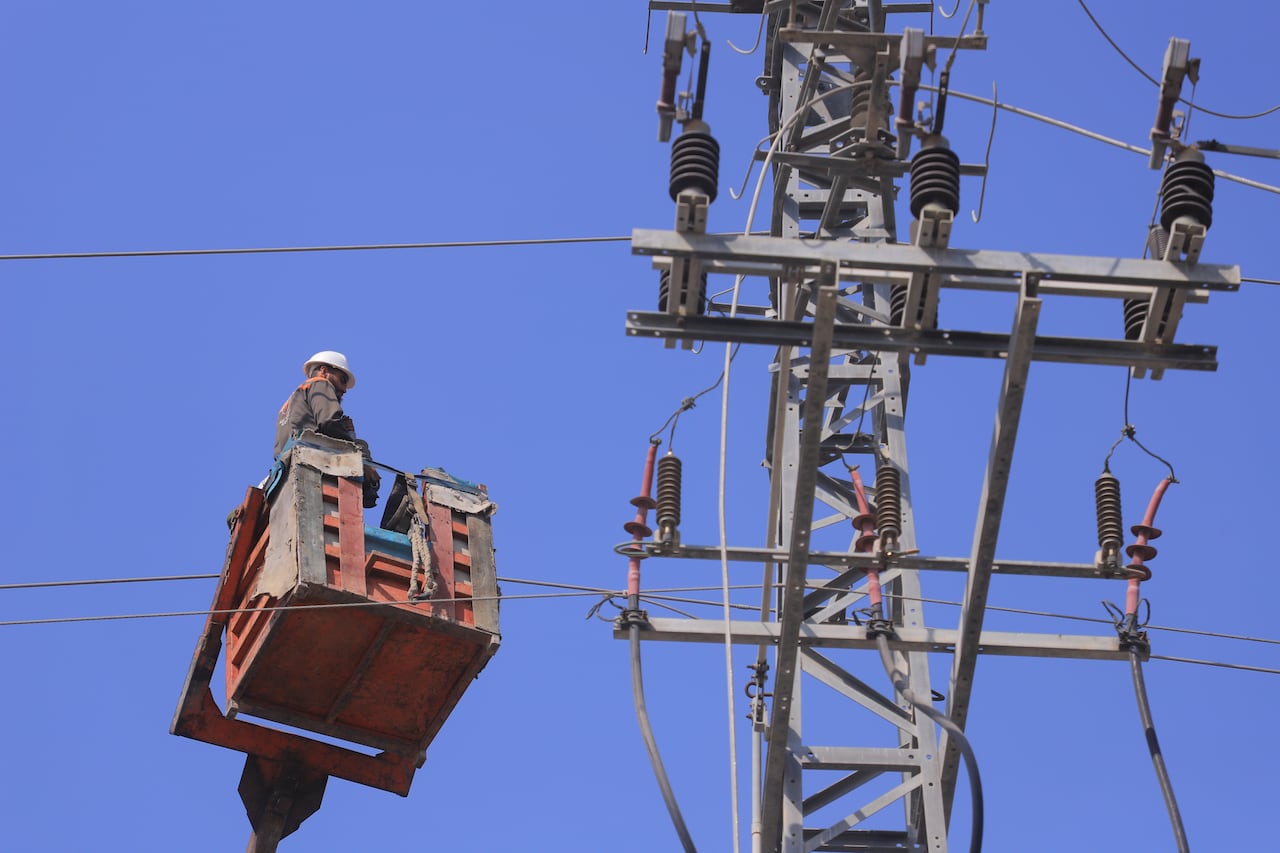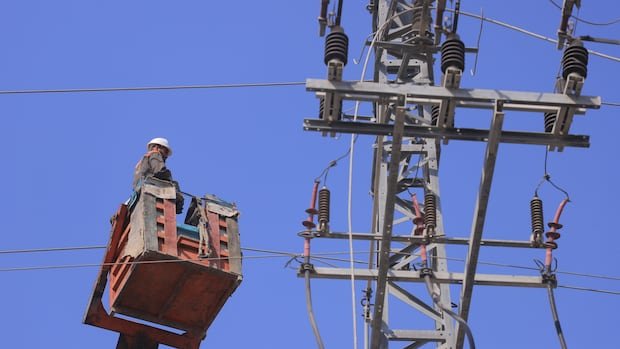Listen to this article
Estimated 4 minutes
The audio version of this article is generated by text-to-speech, a technology based on artificial intelligence.
It’s pitch black out on the street near Al Shifa hospital in Gaza City. The Abu Naji family huddle in their tent near the hospital around a small fire.
After more than two years of war, this time of the night is unfamiliarly quiet, save for some crickets and the cracking sounds the fire makes. Shrouq Abu Naji hands her children a notebook to rip pages out of. This is the only means of maintaining the small flame.
“We haven’t had electricity in … years,” Abu Naji told CBC freelance videographer Mohamed El Saife on Wednesday.
On Oct. 9, 2023, two days after the Hamas attacks on Israel, the Israeli government announced it was cutting off electricity, along with water, food and fuel to Gaza.
While Palestinians struggle to rebuild their lives amid a fragile ceasefire with limited resources, teams of electrical crews have started work restoring power to parts of the Gaza Strip by working on power lines.
For the Abu Naji family, living in a tent in one of the most heavily bombed areas of Gaza City, their only source of heat and light still comes from a fire at night.
Abu Naji sets a pot of water on the open flame for tea and lentils — some semblance of a bedtime routine for this little family that lived through two years of war.
“We drink a cup of tea and have a meal then lay our heads down and sleep,” she said.
Meanwhile, in central Gaza, the Gaza Electricity Distribution Company (GEDCO), the privately funded company that provides power to the strip, is facing an uphill battle to turn the lights back on.

Waiting on equipment
Since the ceasefire, electricity is again available from Israel, and there is a small power plant in Gaza City, but repairs are needed for distribution.
On Nov. 5, crews from the Gaza Electricity Company drove through the town of Deir al Balah for the first time since war broke out. In central Gaza, about 20 kilometres south of Gaza City in a zone that was spared somewhat from the worst of the fighting.
Here, there are low-rise buildings still standing and power lines that are damaged, but exist.
Yasen Suwaihli, 50, supervises the work as men get into forklifts, rise up to the top of power lines and begin maintenance work as part of efforts to restore basic needs to civilians in the Gaza Strip.
“Our teams are working on fixing destroyed power lines on Salah el din road so that we can bring electricity back to the power plant,” he told El Saife.

Amid the cacophony of a Salah el din road, the crews stop at each power line, checking it and readjusting it to bring electricity back to the area.
Muhammad Thabet, an engineer on site with the crews assessing the work in the neighbourhood of Zuwaida, said the crews face difficulties including lack of access to equipment.
He said that the company was waiting on more equipment from Ramallah, north of Jerusalem in Israel, but that it was not yet cleared to enter Gaza making their work nearly impossible at times.
“The electrical company is in dire need of maintenance equipment, including supplies and machines, to support the teams to rebuild the power lines and the electrical company,” he said.
He said over 52 power poles were completely destroyed, “representing around 80 per cent of the overall power.”
But he said despite the difficulties, the teams are ready to bring back electricity to the Gaza Strip.
“The destruction of electricity infrastructure has intensified life-threatening challenges, underscoring the critical role of electricity in ensuring access to clean water, food, healthcare, and economic recovery.”
Back in Gaza City, Abu Naji prepares her children for bed. The fire goes out and darkness surrounds the family.
As a mother, her only concern now is to find support for her children.
“The kids lost all their rights… they have nothing left,” she said before the fire goes out and the family drifts off to sleep.


